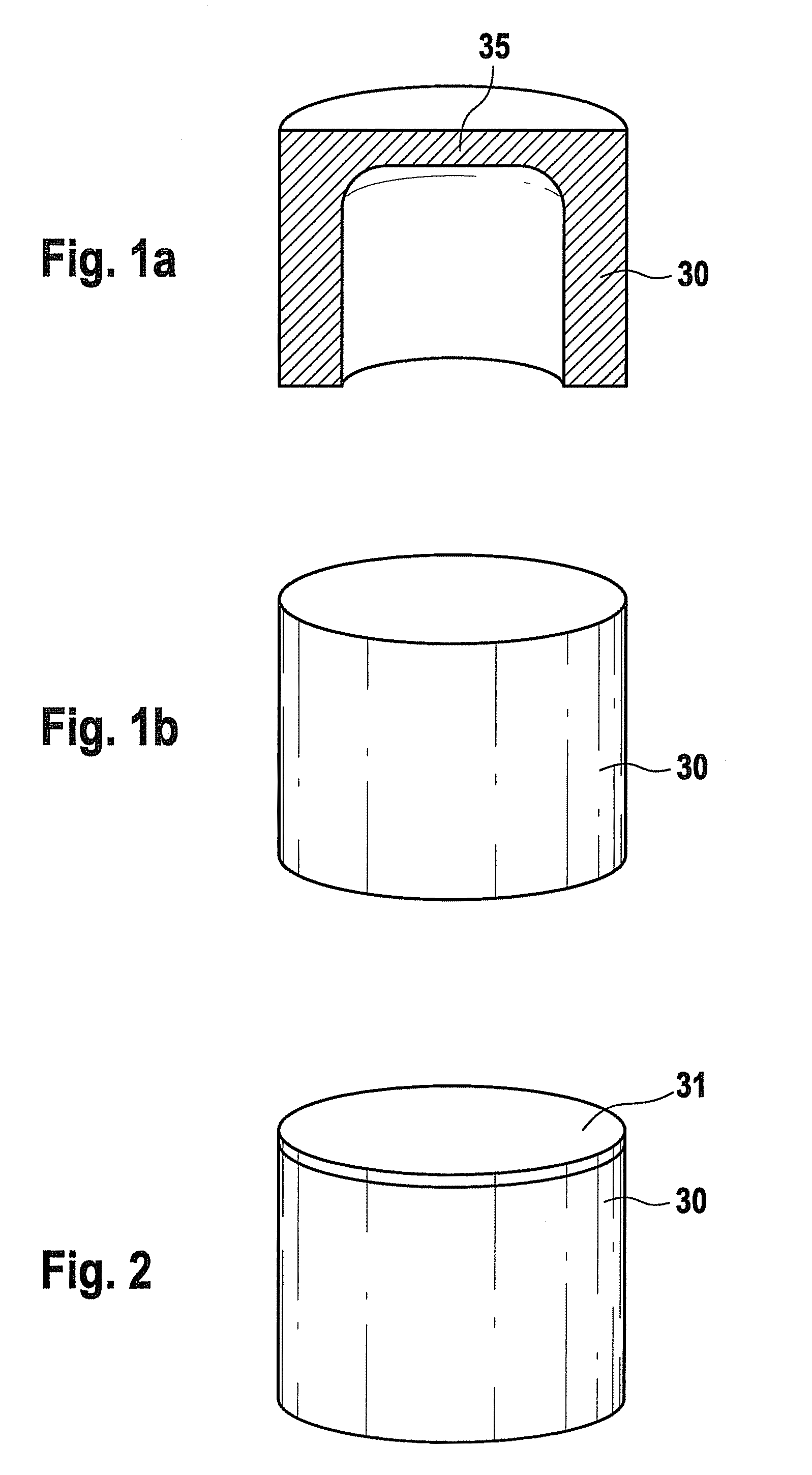Method for manufacturing a sensor component and sensor component
a manufacturing method and sensor technology, applied in the direction of fluid pressure measurement, fluid pressure measurement by electric/magnetic elements, instruments, etc., can solve the problems of strain gauge failure, detachment from damage to the bond of the strain gauge with the rest of the sensor component, so as to avoid or at least reduce the disadvantages of the related art, avoid failures or reduce the effect of failures
- Summary
- Abstract
- Description
- Claims
- Application Information
AI Technical Summary
Benefits of technology
Problems solved by technology
Method used
Image
Examples
Embodiment Construction
[0013]FIGS. 1a and 1b respectively show a schematic sectional view and a perspective view of a metal substrate 30. Metal substrate 30 has an essentially cylindrical shape. The cylinder, starting from a front face, has a recess along its longitudinal axis and the other front face is closed and forms a sensor diaphragm 35, e.g., for forming a pressure sensor. It may be provided that sensor diaphragms 35 of different thicknesses are used for sensing different pressure ranges. A pressure state present in the interior of the cylinder, i.e., in the recess, exerts a pressure force on the front face of metal substrate 30, thereby curving sensor diaphragm 35. A semiconductor substrate 20 (not shown in FIG. 1), bonded with metal substrate 30 on the sensor diaphragm 35, is able to detect a curvature of sensor diaphragm 35. For this purpose, a bond between semiconductor substrate 20 and metal substrate 30 via a bonding material 40 (not shown in FIG. 1) is produced in a low temperature process w...
PUM
| Property | Measurement | Unit |
|---|---|---|
| Length | aaaaa | aaaaa |
| Nanoscale particle size | aaaaa | aaaaa |
| Temperature | aaaaa | aaaaa |
Abstract
Description
Claims
Application Information
 Login to View More
Login to View More - R&D
- Intellectual Property
- Life Sciences
- Materials
- Tech Scout
- Unparalleled Data Quality
- Higher Quality Content
- 60% Fewer Hallucinations
Browse by: Latest US Patents, China's latest patents, Technical Efficacy Thesaurus, Application Domain, Technology Topic, Popular Technical Reports.
© 2025 PatSnap. All rights reserved.Legal|Privacy policy|Modern Slavery Act Transparency Statement|Sitemap|About US| Contact US: help@patsnap.com



